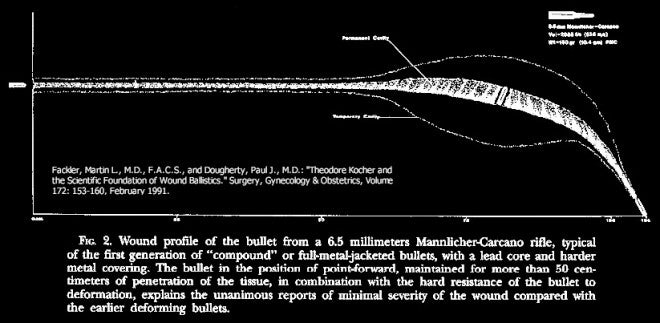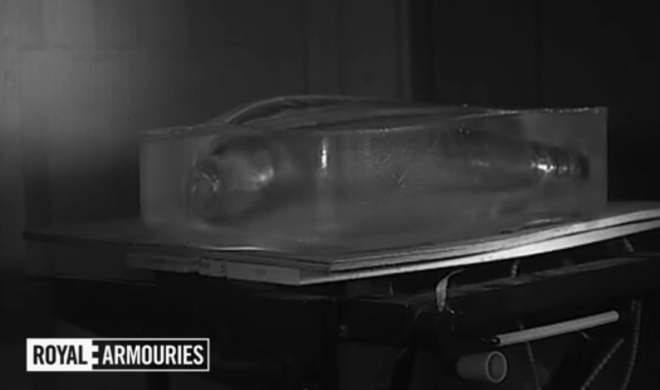The caliber wars have raged for as long as there have been calibers. At the end of last year, we looked at an article from 1891 deriding as useless small caliber rounds – that is, .30 caliber rounds – versus their larger .45 caliber counterparts. But how do these compare, really? One extra data point has been added by the Royal Armouries at Leeds, who tested a Martini-Henry rifle against ballistic gelatin:
Not many gel tests have been done against round-nosed FMJ rifle rounds, of any caliber. This test shows how extremely stable these projectiles are in tissue – they do eventually yaw, but it takes a considerable amount of time for them to do so. This is a good thing if your target is dangerous game with considerable thickness – such as a lion or a water buffalo, but against a human it tends to create a hole and not much else. Even the temporary cavity of the round is relatively sedate, with little tearing, thanks to the projectile’s low velocity.
How would the .30 caliber round-nosed FMJs of the period have compared? That’s difficult to know without a comparable test, which, unfortunately, does not seem to exist. However, we can make some informed speculation. First, the .30 caliber rounds would have had a much higher muzzle velocity, 600-900 ft/s higher. This would in theory improve their ability to cause remote wounding through the temporary cavity, though whether they were actually capable of remote wounding is something one can only speculate on. Second, we do have available gel tests of both the 6.5x52mm Carcano – a similar, but smaller caliber round, and the .30 Carbine, a less powerful round of the same caliber:

Fackler’s famous shot track of the 6.5x52mm Mannlicher-Carcano. Evident is the were high stability of the bullet for over 500mm of penetration. This result is verified by Brassfetcher’s testing; unfortunately the images hosted in the PDF of which have expired – however, the thumbnails are still visible. Image source: firearmstactical.com
It’s likely that the effectiveness of early .30 caliber military round-nosed FMJs is somewhere in between these two – that is to say, poor by modern standards. The bullets were undoubtedly stable (in fact, the math suggests they would be even more stable than the 6.5mm Carcano’s 160gr bullet), and their ability to cause remote wounding through the temporary cavity remains in question. However, this performance is very similar still to the .577/450 caliber, but presumably with a smaller diameter hole. Therefore, it would be premature in my opinion to say that the .45 caliber cartridge necessarily would have better effectiveness.
 Your Privacy Choices
Your Privacy Choices
